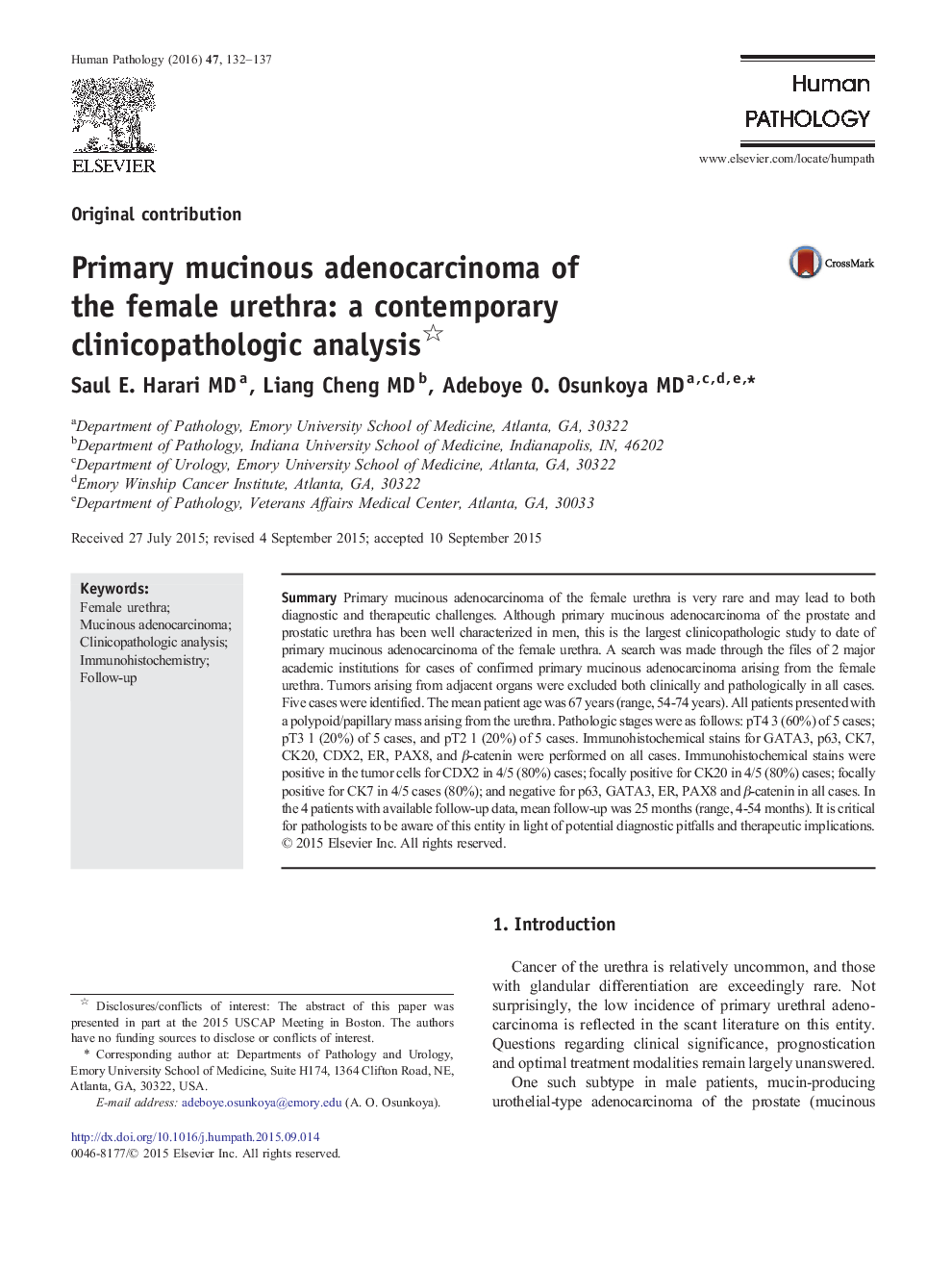| Article ID | Journal | Published Year | Pages | File Type |
|---|---|---|---|---|
| 4132498 | Human Pathology | 2016 | 6 Pages |
SummaryPrimary mucinous adenocarcinoma of the female urethra is very rare and may lead to both diagnostic and therapeutic challenges. Although primary mucinous adenocarcinoma of the prostate and prostatic urethra has been well characterized in men, this is the largest clinicopathologic study to date of primary mucinous adenocarcinoma of the female urethra. A search was made through the files of 2 major academic institutions for cases of confirmed primary mucinous adenocarcinoma arising from the female urethra. Tumors arising from adjacent organs were excluded both clinically and pathologically in all cases. Five cases were identified. The mean patient age was 67 years (range, 54-74 years). All patients presented with a polypoid/papillary mass arising from the urethra. Pathologic stages were as follows: pT4 3 (60%) of 5 cases; pT3 1 (20%) of 5 cases, and pT2 1 (20%) of 5 cases. Immunohistochemical stains for GATA3, p63, CK7, CK20, CDX2, ER, PAX8, and β-catenin were performed on all cases. Immunohistochemical stains were positive in the tumor cells for CDX2 in 4/5 (80%) cases; focally positive for CK20 in 4/5 (80%) cases; focally positive for CK7 in 4/5 cases (80%); and negative for p63, GATA3, ER, PAX8 and β-catenin in all cases. In the 4 patients with available follow-up data, mean follow-up was 25 months (range, 4-54 months). It is critical for pathologists to be aware of this entity in light of potential diagnostic pitfalls and therapeutic implications.
